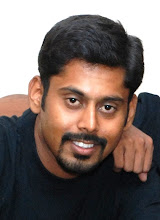I just don’t get the idea. People talk about lighting a candle to remember the innocent people who died during the terror attacks at the TAJ in Mumbai. My heart is full of resentment, pain and seeking revenge. For how long, how many days and most important how many times will v keep saying, “its OK.. We know about the terrorists, we can work out a plan and be well prepared when they strike the next time etc.. “. The truth is it just doesn’t work. Ya, it is a known fact that its not an easy task, but its not an impossible one either.
People have hoisted our national flag in front of the Taj is wat i came to know. N may i know the reason why? Oh, is it bcse v conquered the terrorists? But the core is that v killed 9 of them, captured one, but how many innocent lives did v ve to pay for it? Enough of this thought saying peace and non violence. It works only for those people who have some concern for humanity and human lives. I just see no victory and absolutely not a reason to celebrate. Just 10 people had the power, the thought and intelligence to screw up an entire nation’s sleep and peace for 60 long hours. Doesn’t this thought burn inside u? I have always felt proud about calling me an Indian. But this time, I broke down. Revisit the memory lane, not a long distance, just the recent past. How many terror attacks? It’s become so easy that the Indian security can be by passed and bombs can be plotted anywhere and anytime, at will.
The prime reason lies in the strength of our security force. The training that these people receive is far below level when compared to the training that the terrorists undergo. The difference lies in the training, the arms and ammunition used and the compensation paid for giving up their lives. The thought that “Wars are won by the might in the heart than in the supplements (arms)” might hold good for arguments and debates, but it jus doesn’t work. I can have the might of an elephant in my heart, but without guns, I can’t do my duty. I am well aware that my opponent can gun me down in seconds. “Knowing this really well, how can the government expect me to lay down my life just like that??” is the question on every Jawans mind. The guns used were far below par, infact some reports indicate that these were similar to the ones used during the world war II. I suppose the London newspapers highlighted the same.
Not only this, there are reports that the bullet proof jackets weren’t available. Only ten jackets were there. There were footages depicting the ATS chief trying out various jackets. The question to be asked is that why don’t these people have a tailor made one. The same was highlighted in the Devil’s Advocate too. The papers also indicate that some of the jackets that the commandos wore were “riot-jackets” and not “bullet-proof” ones.
The other reasons were “our system”, “our intelligence agencies”. The question remains that “in spite of receiving repeated alerts from various sources that there are possibilities of a terror attack, we weren’t prepared”. People might say that its a false news, but the fact remains that all leading newspapers in the US and UK have quoted that this information was passed on to our Indian officials many times. A leading UK daily has also mentioned that the Officials were informed that TAJ could be one of the potential zones. But we didn’t pay enough attention to it, look what it has cost us? 220 people dead. The NSG which should have reacted in 20 mins to one hour took almost 20 hours to reach there (As quoted by the news papers). Reasons – no dedicated transportations planes or copters.
Where is all the money going? I personally feel that the Indian Government needs a major restructuring, young blood needs to take it all up, bloody (pardon me), those at the top should realise that the post held by them and they are accountable to all that is happening. I hope that these shouldn’t repeat in future. We should no longer wait. Its all action hereafter. “Thorn for a thorn” is wat these people understand. Its high time that we fight and put an end to these terrorist attacks.
